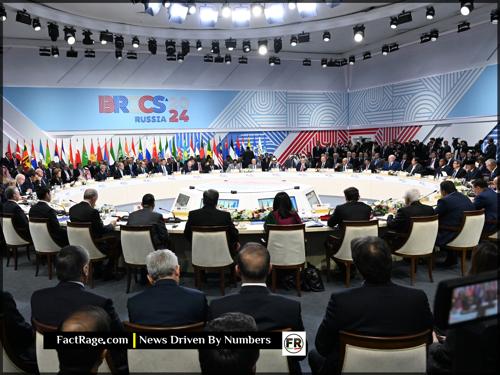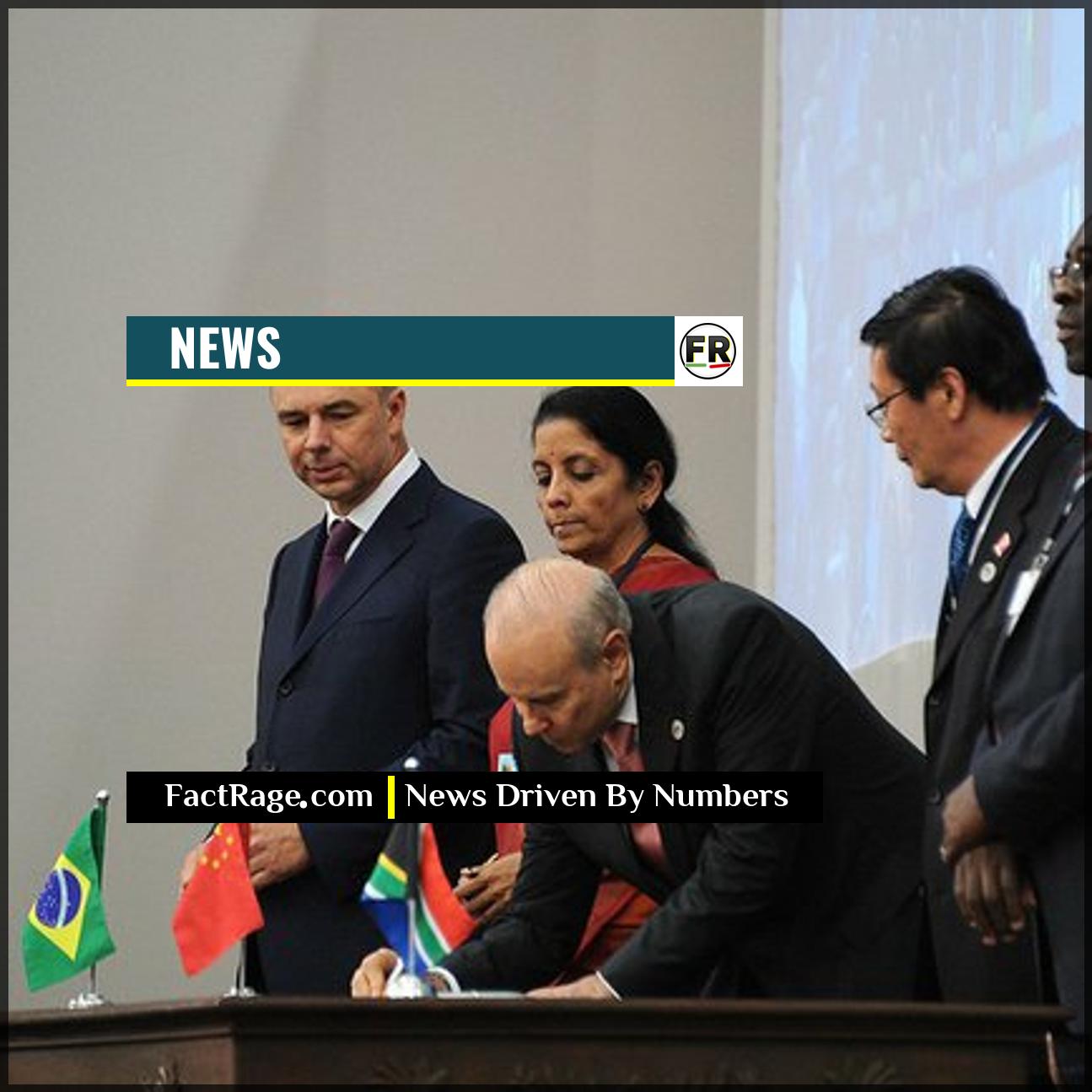FACTRAGE – The expanded BRICS group of nations is increasingly presented as a unified force challenging the existing global order, yet a closer look at its internal policies and economic data reveals significant fractures and competing national interests that may define its future more than its collective ambition.
- Economic Imbalance – China’s economy is more than double the size of all other original BRICS members combined, creating a significant power imbalance that influences the bloc’s priorities and financial mechanisms.
- Conflicting Foreign Policies – Members like India and China have ongoing border disputes and divergent strategic partnerships, while new members like Iran and Saudi Arabia are historic regional rivals, creating complex internal political dynamics.
- De-Dollarization Hurdles – Despite aspirations to reduce reliance on the U.S. dollar, the vast majority of trade among BRICS nations remains dollar-denominated due to the lack of a viable, trusted, and fully convertible alternative currency.
The narrative of a cohesive BRICS bloc is a powerful one, but the reality on the ground is a complex interplay of cooperation and competition. To understand the group’s true potential and its limitations, it is essential to analyze the specific policy disagreements and economic structures that exist beneath the surface of their joint declarations.
Beyond the Summit Photo-Op
![]() It’s easy to get caught up in the narrative of the BRICS bloc as a unified challenger to the established world order. However, the most critical story isn’t about the group’s collective statements, but the hard data and policy mechanics that operate beneath the surface. Understanding the future of this alliance requires moving past the political theater and analyzing the competing national interests and economic realities that truly drive its members.
It’s easy to get caught up in the narrative of the BRICS bloc as a unified challenger to the established world order. However, the most critical story isn’t about the group’s collective statements, but the hard data and policy mechanics that operate beneath the surface. Understanding the future of this alliance requires moving past the political theater and analyzing the competing national interests and economic realities that truly drive its members.
Read On…
Read on for a data-driven breakdown of the economic imbalances, political rivalries, and policy hurdles that will ultimately define the bloc’s influence.
One Nation’s Economic Gravity Shapes the Bloc

The story of the BRICS economy is largely the story of China’s economy. With a nominal GDP exceeding $19 trillion, China’s economic output is more than twice that of India, Russia, Brazil, and South Africa combined. This massive disparity creates an undeniable center of gravity within the group. While the New Development Bank (NDB), the bloc’s alternative to the World Bank, was founded on the principle of equal shares for the original five members, Beijing’s economic influence inevitably shapes the group’s agenda.
This economic dominance raises critical policy questions for other members. How can smaller economies like South Africa or new entrant Ethiopia ensure their interests are represented when one member holds most of the economic leverage? For India, a direct economic and strategic competitor to China, this imbalance complicates efforts to position BRICS as a truly multipolar institution rather than a vehicle for Chinese influence. The bloc’s economic projects and financial decisions are consistently viewed through the lens of this internal power dynamic.
A Coalition of Rivals? Mapping the Political Fault Lines
The recent expansion of BRICS, which added Egypt, Ethiopia, Iran, and the United Arab Emirates, with Saudi Arabia’s inclusion pending, has made the bloc’s internal politics even more complex. The group now contains nations with not just different policy goals, but histories of direct conflict. The most significant fault line remains between the two largest members, China and India. The two nations are engaged in a long-standing and sometimes violent border dispute in the Himalayas and are strategic rivals for influence across Asia. India is also a key member of the Quadrilateral Security Dialogue (the “Quad”) with the U.S., Japan, and Australia—a group widely seen as a counterbalance to China’s power.
The inclusion of Iran and Saudi Arabia brings another layer of complexity. While the two have recently normalized diplomatic relations, decades of proxy conflicts and deep-seated rivalry for regional dominance in the Middle East still linger. Furthermore, Russia’s strategic objectives, heavily influenced by its war in Ukraine and Western sanctions, differ significantly from those of trade-focused members like Brazil or the UAE, which seek to maintain stable economic ties with all global powers. Can a bloc built on the promise of economic cooperation successfully manage these deep-seated geopolitical rivalries?
The De-Dollarization Dilemma: Ambition vs. Reality
A central, publicly stated goal of the BRICS bloc is “de-dollarization”—reducing the world’s reliance on the U.S. dollar for trade and finance. Members have increased trading in their local currencies, and there is ongoing discussion of a potential BRICS common payment system or even currency. However, the data reveals a significant gap between this ambition and the current reality. The U.S. dollar remains the dominant currency in over 80% of the foreign trade for most BRICS members.
Several structural barriers stand in the way. The Chinese yuan, the most likely candidate to challenge the dollar, is not fully convertible and its exchange rate is tightly managed by Beijing, limiting its appeal as a global reserve currency. Other member currencies lack the scale, stability, and trust required for widespread international use. Even the NDB continues to raise a substantial portion of its capital in U.S. dollars on international markets. For a BRICS currency to become a realistic alternative, members would need to overcome issues of trust, create a unified and transparent monetary policy, and build financial market infrastructure that could rival the depth and liquidity of the dollar-based system.
The Political Calculus of an Expanded BRICS
![]() Ultimately, the trajectory of the BRICS bloc is less about its unified challenge to the existing order and more about the complex political math within its own ranks. The ambition to create a new center of global power is a powerful narrative, but it consistently collides with the hard data of economic imbalances and the intractable reality of competing national interests. The true measure of the alliance’s future impact, therefore, will not be found in its summit communiqués, but in its ability to solve the fundamental policy equations that currently divide its members.
Ultimately, the trajectory of the BRICS bloc is less about its unified challenge to the existing order and more about the complex political math within its own ranks. The ambition to create a new center of global power is a powerful narrative, but it consistently collides with the hard data of economic imbalances and the intractable reality of competing national interests. The true measure of the alliance’s future impact, therefore, will not be found in its summit communiqués, but in its ability to solve the fundamental policy equations that currently divide its members.














